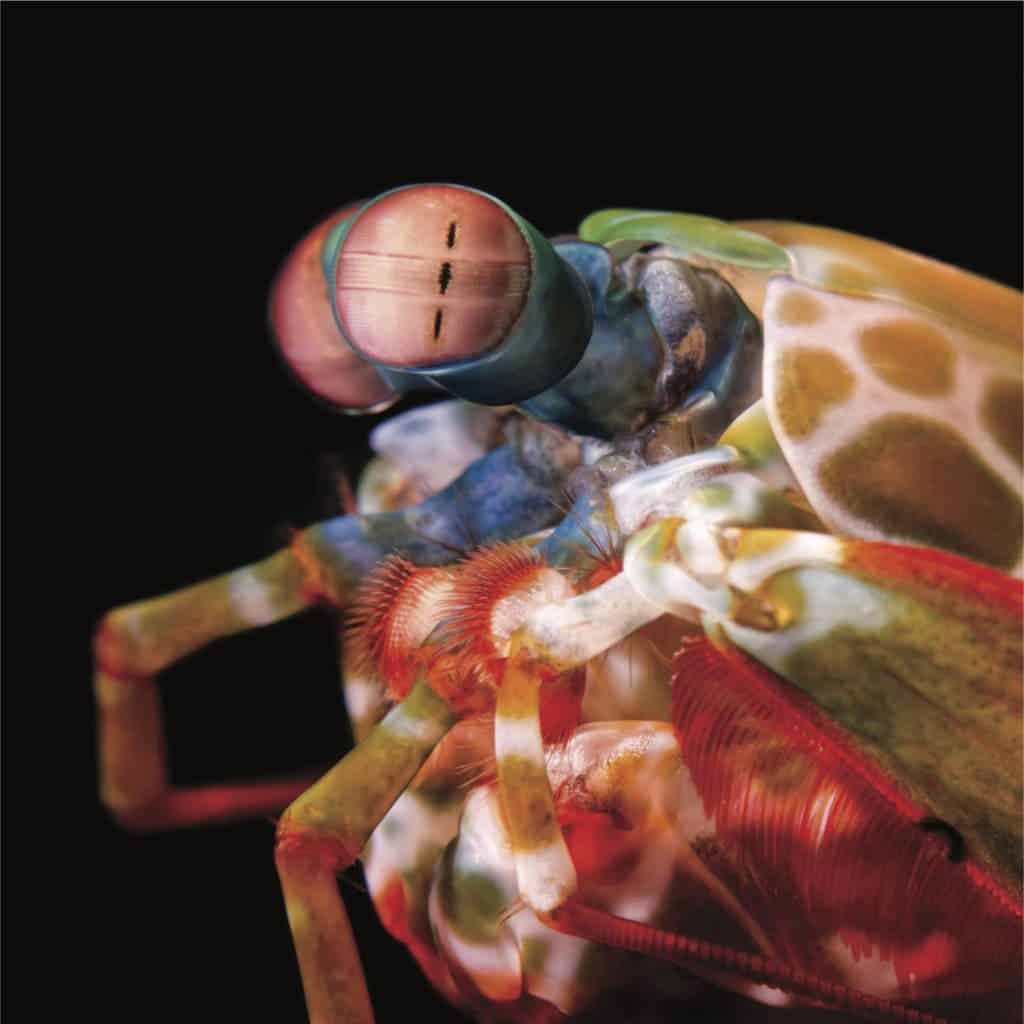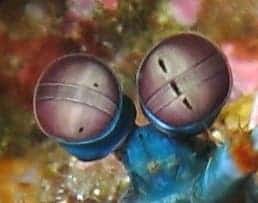The mantis shrimp may only measure mere inches long but it packs the fastest punch in the animal world. They use their forelimbs like clubs, striking with such voracity that pockets of seawater vaporize and implode, wreaking havoc on their prey — as well as aquarium walls and even human thumbs. Being able to coordinate this extremely quick punch requires exceptional eyesight to coordinate it.
Now, researchers have finally figured out what makes the mantis shrimp’s eyes so amazing.

The extraordinary eyes of the stomatopod Odontodactylus scyllarus are capable of independent rotation in all three axes of rotation. Image credits: Michael Bok.
Mantis shrimp vision is extraordinary — we already knew that. Not only do they have an extremely clear color vision (mammals have just three photoreceptor cells, whereas mantis shrimps use a dozen), but they also have the ability to see the polarisation of light. Now, researchers have shown that they have extremely mobile eyes that never stop moving — in direct contrast to most other creatures, which try to limit eye movement as much as possible to avoid blurring.
Out of the 450 or so species of mantis shrimp, one of the best studied is the peacock mantis shrimp, Odontodactylus scyllarus. The compound eyes of this shrimp are perched on the end of supportive stalks, being able to move independently in all three axes of rotation: pitch (up-down), yaw (side-to-side) and roll (twisting about the eye-stalk). Amazingly, they always know which way is up, regardless of what their eyes are doing.
A Bristol-led team of researchers based at the University’s Ecology of Vision Laboratory wanted to test the limits of this mobility, seeing at what point they steady their gaze and stop their eyes from moving. The results were surprising.
Researchers found that while mantis shrimp do make stabilizing side-to-side movements that help keep their vision steady, they don’t really stop rolling their eyes. For any other creature, the purpose of stopping your eyes is to stabilize vision and prevent blurring, but the mantis shrimp continues to roll its eyes, which means that ‘up’ becomes ‘sideways’ — and yet somehow, through all this bizarre eye movement, the creature still knows which way is up.
Ilse Daly from Bristol’s School of Biological Sciences and lead author of the study, explains:
“It would be like you tipping your head on its side, then back to normal and all angles in between all while trying to follow the motion of a target.”
“Just to make things even more confusing, the left and right eyes can move completely independently of one another, such that one eye could be oriented horizontally, while the other could be twisted completely through 90 degrees to be on its side.”
In order to figure this out, researchers got a bit creative — and a bit cruel: they made the world rotate around the mantis shrimp, deliberately inducing severe vertigo, as you’d experience on some of the wilder carnival rides. However, this didn’t seem to phase the shrimps at all. Researchers expected the shrimp to move their eyes to counteract the spinning world around them, but they didn’t. Daly added:
“We expected that, in response to the world around them apparently rolling, mantis shrimp should roll their eyes to follow their surroundings. They did not.”
“The mantis shrimp visual system seems entirely immune from any negative effects of rolling their eyes. Indeed, it appears as though rolling has absolutely no effect on their perception of space at all: up is still up, even when their eyes have rolled completely sideways. This is unprecedented in the animal kingdom.”
All of this suggests that the bearing of the shrimps’ eyes doesn’t have anything to do with their perception of space, which would make them unique in the animal world.
Journal Reference: Ilse M. Daly, Martin J. How, Julian C. Partridge, Nicholas W. Roberts. Complex gaze stabilization in mantis shrimp. Proceedings of the Royal Society B: Biological Sciences, DOI: 10.1098/rspb.2018.0594










